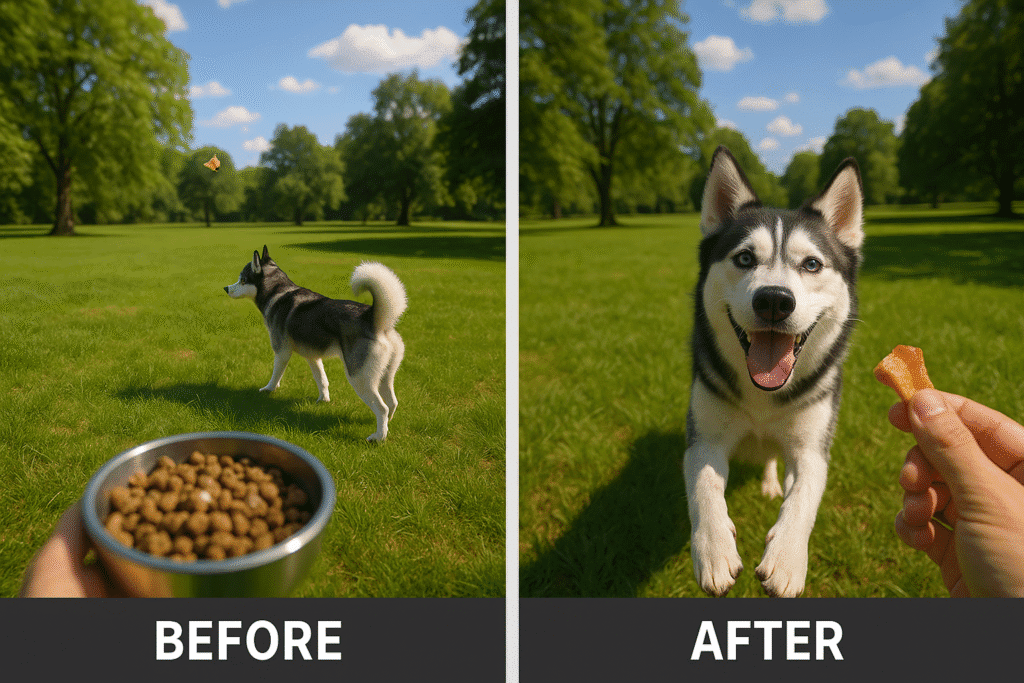Selective Hearing in Dogs: Why Your Dog Ignores You on Purpose
You call their name. Nothing. You say, “Come!” with your most authoritative voice. Not even a twitch of an ear. You plead, “Can you please look at me?” and you’re met with the deafening silence of a dog suddenly fascinated by a loose thread on the rug. Then, you quietly crinkle a snack bag from the next room, and your dog materializes out of thin air, a blur of fur and eager anticipation. If this scenario sounds painfully familiar, then congratulations, you are the proud owner of a dog with a severe case of “selective hearing.”
This phenomenon, where a dog appears to hear what it wants to hear and conveniently tunes out the rest, is one of the most common frustrations for pet owners. It can be maddening, hilarious, and sometimes, a little bit worrying. Is your dog being deliberately disobedient? Are they just a “stubborn” breed? Or is something else going on in that furry little head?
In this guide, we’ll decode the art of the canine tune-out. We’ll explore the real reasons—both petty and practical—behind why your dog ignores you, and most importantly, what you can do to become the one voice they always choose to listen to.
Is It Deliberate Sass or a Genuine Issue?
Before we label our pups as master manipulators, it’s crucial to rule out legitimate reasons why they might not be responding. What looks like stubbornness can sometimes be a misunderstanding or a physical issue. True canine behavior analysis means looking at all the possibilities.
Could It Be Their Actual Hearing?
This is the first and most important stop. Gradual hearing loss is common in senior dogs, but it can also affect dogs of any age due to genetics, infections, or injury. If your dog used to have sharp recall and has recently started ignoring you, or if they seem easily startled, a check-up with your vet is a non-negotiable first step to rule out any medical problems.
The Power of Distraction
Your dog’s world is a sensory wonderland. We ask them to “come” in a quiet hallway, and they obey. We ask them to “come” at a park where there are squirrels to chase, new dogs to smell, and exciting new sounds, and suddenly we cease to exist. This isn’t necessarily defiance; it’s just that the environment is far more rewarding than your request. Their brain is flooded with high-value stimuli, and your voice is just one small signal in a sea of exciting noise.
Have You Taught Them to Ignore You?
This one is a tough pill to swallow, but we often accidentally train our dogs to tune us out. Have you ever repeated a command over and over? “Sit. Sit. Fido, SIT!” When you do this, the dog learns that the first few words are meaningless noise and they only need to pay attention after the fifth or sixth try. This is a classic way we undermine our own training efforts and weaken our cues.
The PettyPups Radio: Top 5 Reasons for a Tune-Out
Okay, now that we’ve covered the practicalities, let’s get to the fun part. Sometimes, your dog’s selective hearing is absolutely a conscious choice, a calculated decision made in their own best interest. Here are the top channels on “PettyPups Radio”:
1. The “What’s In It For Me?” Calculation
Dogs are smart, pragmatic creatures. They are constantly running a cost-benefit analysis. You’re asking me to abandon my incredibly important task of sniffing this lamppost and walk all the way back to you. What’s the payoff? If the reward you’re offering (a simple “good boy”) isn’t as valuable as their current activity, the math simply doesn’t add up for them. They’re not being bad; they’re being efficient.
2. The Command Is Associated with Something Bad
This is what trainers call “poisoning the cue.” If you frequently call your dog to you (“Come!”) only to immediately give them a bath, clip their nails, or leave the exciting dog park, they will quickly learn that the command predicts the end of all fun. Why would they willingly obey a word that means the party is over? They’re not ignoring the command; they are actively avoiding the negative outcome it predicts.
3. They Are Simply Not in the Mood
Just like us, dogs have moods. Sometimes they are tired, a bit sore, or just feeling lazy and would rather not get up from their comfortable spot on the couch. That look they give you isn’t one of deafness; it’s one that says, “I acknowledge your request, but I must respectfully decline at this time. Please submit your query in 3-5 business naps.”
4. You’re Speaking the Wrong Language
While dogs can learn verbal cues, their primary language is body language. If you’re saying “come” with a happy voice but your body language is tense, frustrated, and leaning forward (which can be intimidating), your dog gets mixed signals. They are more likely to trust what your body is saying (“that human seems angry”) over what your words are saying.
5. Testing the Boundaries
This is especially common in adolescent dogs (the “teenage” phase from about 6 to 18 months). They know the rules, but they are testing them to see what they can get away with. Ignoring a known command is a classic way for a young dog to assert a little independence and check if the household regulations are still in effect.
How to Become Their Favorite Station: Tips for Better Listening
Improving your dog’s listening skills isn’t about demanding obedience; it’s about making it easy and rewarding for them to choose to listen to you. It’s about building a rock-solid bond through positive reinforcement training.
- Use High-Value Rewards: Find out what truly motivates your dog. For some, it’s a piece of kibble. For most, especially in distracting environments, you’ll need something better: tiny pieces of chicken, cheese, or a super-exciting squeaky toy they only get when they obey a command.
- Protect Your Cue: Never repeat a command over and over. Say it once, clearly. If they don’t respond, make it easier for them to succeed (e.g., move closer) or use a gentle gesture to guide them. Also, make sure the “come” command leads to wonderful things (treats, praise, a fun game) 90% of the time. If you need to do something they don’t like, just go and get them without using the command.
- Practice in Easy Environments First: Start recall training in your quiet living room. Once they are 100% successful there, move to the backyard. Then a quiet park. Slowly increase the level of distraction. Don’t ask for a perfect recall at a busy park until you’ve built up to it.
- Keep It Fun and Short: Training sessions should feel like a game, not a chore. Keep them upbeat and short (5-10 minutes max) to hold your dog’s attention and end on a positive, successful note.
- Manage the Environment: When you’re in a new or distracting place, use a long training leash. This prevents the dog from being able to successfully ignore you and run off. It gives you control and sets them up for success, allowing you to gently guide them back and reward them for coming to you.
Conclusion: From Frustration to Fascination
That moment when your dog pointedly ignores you can be frustrating, but it’s also a fascinating window into their world. It’s a reminder that they are thinking, feeling beings with their own priorities and motivations. By ruling out physical issues, understanding their perspective, and using smart, positive training, you can transform “selective hearing” into reliable communication.
So next time your dog gives you the cold shoulder, take a breath. See it not as an act of defiance, but as a piece of data. What is more interesting than you right now? Is the reward good enough? Are they trying to tell you something? Answering those questions is the first step to building a bond so strong that your voice becomes the one they always want to hear.






